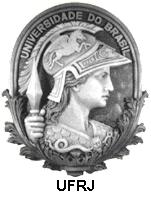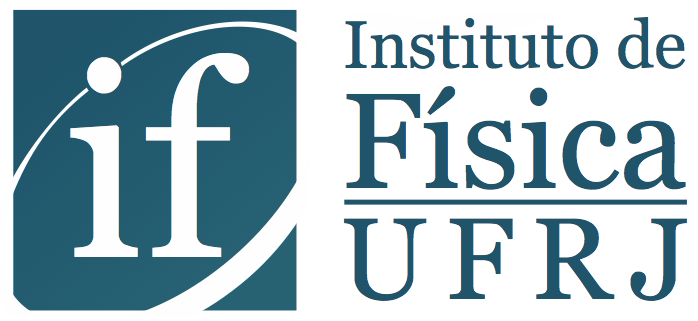2016
- Teoria das pinças óticas próximas à uma interface plana
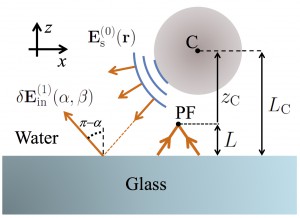 Utilizando a decomposição de espectro angular de Weyl para representar ondas esféricas em termos de raios reais e complexos, derivamos uma série recursiva de múltiplas reflexões, de rápida convergência, que descreve as reverberações, incluindo também as componentes evanescentes, na proposta de uma calibração absoluta em experimentos utilizando a técnica de pinças óticas próxima à interface plana definida pela lamínula do microscópio, onde os efeitos de campo próximo se tornam importantes. Encontramos um bom acordo com os resultados experimentais encontrados na literatura. Desta forma a técnica de calibração absoluta poder ser aplicada para todas as situações encontradas na prática.
Utilizando a decomposição de espectro angular de Weyl para representar ondas esféricas em termos de raios reais e complexos, derivamos uma série recursiva de múltiplas reflexões, de rápida convergência, que descreve as reverberações, incluindo também as componentes evanescentes, na proposta de uma calibração absoluta em experimentos utilizando a técnica de pinças óticas próxima à interface plana definida pela lamínula do microscópio, onde os efeitos de campo próximo se tornam importantes. Encontramos um bom acordo com os resultados experimentais encontrados na literatura. Desta forma a técnica de calibração absoluta poder ser aplicada para todas as situações encontradas na prática.
R. S. Dutra, P. A. Maia Neto, H. M. Nussenzveig and H. Flyvbjerg, Phys. Rev. A, 94, 053848 (2016); http://journals.aps.org/pra/abstract/10.1103/PhysRevA.94.053848
- Propriedades reológicas de células medidas por pinças óticas
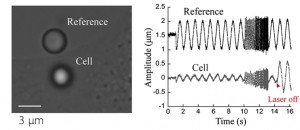 In this work we develop and apply a new methodology based on optical tweezers to investigate the rheological behavior of fibroblasts, neurons and astrocytes in the frequency range from 1Hz to 35Hz, determining the storage and loss moduli of their membrane-cortex complex. To avoid distortions associated with cell probing techniques, we use a previously developed method that takes into account the influence of under bead cell thickness and bead immersion. These two parameters were carefully measured for the three cell types used. Employing the soft glass rheology model, we obtain the scaling exponent and the Young’s modulus for each cell type. The obtained viscoelastic moduli are in the order of Pa. Among the three cell types, astrocytes have the lowest elastic modulus, while neurons and fibroblasts exhibit a more solid-like behavior.
In this work we develop and apply a new methodology based on optical tweezers to investigate the rheological behavior of fibroblasts, neurons and astrocytes in the frequency range from 1Hz to 35Hz, determining the storage and loss moduli of their membrane-cortex complex. To avoid distortions associated with cell probing techniques, we use a previously developed method that takes into account the influence of under bead cell thickness and bead immersion. These two parameters were carefully measured for the three cell types used. Employing the soft glass rheology model, we obtain the scaling exponent and the Young’s modulus for each cell type. The obtained viscoelastic moduli are in the order of Pa. Among the three cell types, astrocytes have the lowest elastic modulus, while neurons and fibroblasts exhibit a more solid-like behavior.
Y. A. Ayala; B. Pontes; D. S. Ether; L. B. Pires; G. R. de Araújo; S. Frases; L. F. Romão; M. Farina; V. Moura-Neto; N. B. Vianna, H. M. Nussenzveig; BMC Biophysics (2016) 9:5 http://dx.doi.org/10.1186/s13628-016-0031-4
2015
Medida da Força de Casimir usando Pinças Óticas – Proposta Experimental e Medida da Força de Dupla Camada
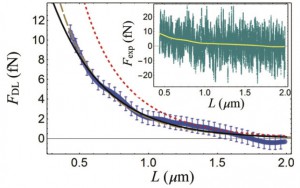 We propose to use optical tweezers to probe the Casimir interaction between micro- spheres inside a liquid medium for geometric aspect ratios far beyond the validity of the widely employed proximity force approximation. This setup has the potential for revealing unprecedented features associated to the non-trivial role of the spherical curvatures. For a proof of concept, we measure femtonewton double-layer forces between polystyrene microspheres at distances above 400 nm by employing very soft optical tweezers, with stiffness of the order of fractions of a fN/nm. As a future application, we propose to tune the Casimir interaction between a metallic and a polystyrene microsphere in saline solution from attraction to repulsion by varying the salt con- centration. With those materials, the screened Casimir interaction may have a larger magnitude than the unscreened one. This line of investigation has the potential for bringing together different fields including classical and quantum optics, statistical physics and colloid science, while paving the way for novel quantitative applications of optical tweezers in cell and molecular biology.
We propose to use optical tweezers to probe the Casimir interaction between micro- spheres inside a liquid medium for geometric aspect ratios far beyond the validity of the widely employed proximity force approximation. This setup has the potential for revealing unprecedented features associated to the non-trivial role of the spherical curvatures. For a proof of concept, we measure femtonewton double-layer forces between polystyrene microspheres at distances above 400 nm by employing very soft optical tweezers, with stiffness of the order of fractions of a fN/nm. As a future application, we propose to tune the Casimir interaction between a metallic and a polystyrene microsphere in saline solution from attraction to repulsion by varying the salt con- centration. With those materials, the screened Casimir interaction may have a larger magnitude than the unscreened one. This line of investigation has the potential for bringing together different fields including classical and quantum optics, statistical physics and colloid science, while paving the way for novel quantitative applications of optical tweezers in cell and molecular biology.
